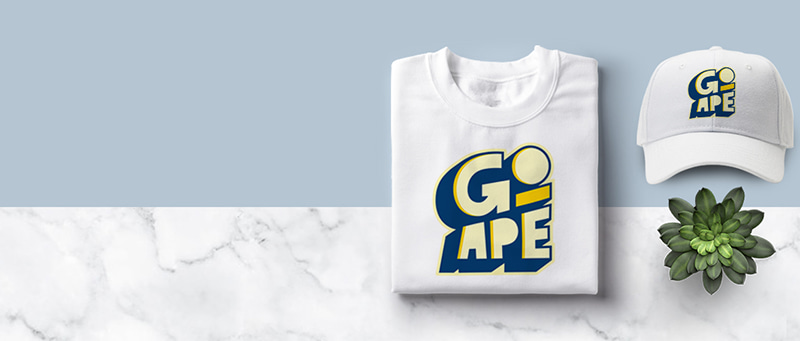Branded Clothing That Lasts: Choosing Fabrics for Longevity
Branded Clothing That Lasts: Choosing Fabrics for Longevity
Blog Article
Understanding Garments: The Significance of Textile Choices in Your Wardrobe
The selection of textile in garments plays a pivotal function in both visual appeals and capability. Various materials offer varying degrees of breathability, toughness, and convenience, straight affecting the user's experience. Understanding these nuances can improve one's wardrobe considerably. Yet, many neglect just how these options can impact not simply individual design, but additionally sustainability. What material choices could redefine your closet and straighten it with both style and obligation?
The Role of Material in Fashion and Capability

Usual Fabric Kinds and Their Characteristics
When choosing apparel, recognizing the qualities of common fabric kinds is essential for making educated choices. Cotton, a widely-used natural fiber, is recognized for its gentleness, breathability, and convenience, making it ideal for sportswear and daily garments. Bed linen, one more all-natural option, boasts outstanding moisture-wicking homes and an unique texture, suitable for cozy climates.Wool, often preferred for its heat and durability, varies in fineness; merino woollen is soft versus the skin, while coarser kinds are utilized for outerwear. Artificial fabrics like polyester and nylon provide longevity and resistance to creases, making them prominent for activewear and travel garments. Lastly, blends, which integrate synthetic and natural fibers, can improve capability while keeping comfort. By identifying these textile features, individuals can select garments that aligns with their lifestyle and aesthetic choices.
Breathability and Comfort: Choosing the Right Fabrics for Different Environments
Picking the right materials for numerous environments can greatly boost comfort and general wearability. Breathable products are necessary in warm environments, as they enable air circulation and dampness evaporation. Fabrics such as cotton, linen, and moisture-wicking synthetics successfully attract sweat away from the body, keeping the user cool and dry. Alternatively, in cooler environments, thicker textiles like wool or fleece give insulation while maintaining breathability, making sure warmth without overheating.Additionally, the choice of fabric weight plays an important duty; lightweight materials are more suitable for summertime, whereas much heavier choices are suited for winter wear. Understanding the special residential properties of each fabric enables people to dress properly for differing weather. Ultimately, choosing breathable and comfy materials customized to particular climates can greatly boost daily convenience and improve the overall experience of putting on clothes.
Durability and Care: Exactly How Textile Affects Longevity of Your Wardrobe
Selecting the appropriate products can significantly affect the sturdiness and care requirements of a wardrobe. Fabrics such as cotton and polyester are known for their durability and convenience of upkeep, making them suitable for day-to-day wear. In comparison, delicate products like silk and lace need more mindful handling and specialized cleansing approaches, which can increase the time and effort required for care. Branded Clothing.Durability is additionally affected by the textile's weave and coating; tightly woven materials tend to resist damage much better than freely woven choices. In addition, synthetic blends commonly give improved toughness, combining the best high qualities of several fibers.Understanding the treatment instructions for each textile is important, as incorrect drying or washing can cause premature wear. websites Inevitably, choosing sturdy products can result in a longer-lasting closet, reducing the frequency of substitutes and adding to a much more lasting fashion selection
The Influence of Fabric on Fit and Shape

Lasting Textile Options: Making Eco-Friendly Choices
The effect of material prolongs past fit and shape to include ecological aspects, motivating a growing rate of interest in lasting textile options. Eco-friendly materials, such as natural cotton, hemp, and Tencel, are gaining traction among customers who focus on sustainability in their closets. These products are frequently created with fewer chemicals and water, reducing their eco-friendly footprint.Additionally, recycled fabrics, made from post-consumer waste, provide an innovative remedy to the textile sector's contamination trouble. Brands significantly welcome transparency in their sourcing methods, permitting customers to make enlightened decisions regarding their purchases.Choosing sustainable fabrics not only sustains moral practices however also motivates the apparel industry to take on even more accountable manufacturing approaches. As recognition of ecological issues climbs, individuals are advised to assess the long-lasting influence of their textile selections, cultivating an activity in the direction of an extra eco aware and lasting method to style.
Raising Design: Just How Fabric Can Transform a Clothing
While several might focus on shade and cut when selecting an attire, the selection of fabric plays a vital duty in elevating style and boosting overall appearance. Various materials convey distinct state of minds and messages; for instance, silk emanates deluxe and class, while denim supplies a casual, kicked back ambiance. The structure and drape of a textile can substantially change the silhouette, with structured materials supplying a polished appearance and softer ones creating a much more fluid, loosened up aesthetic.Moreover, the weight of the material affects wearability throughout seasons. see here now Light-weight fabrics like bed linen and cotton are excellent for summer, while much heavier products such as woollen and velvet offer warmth and style in colder months. Recognizing textile buildings, such as breathability and stretch, also encourages individuals to make informed selections that improve comfort without endangering Home Page design. Eventually, the ideal fabric can change an outfit from normal to remarkable, making it a crucial factor to consider in any kind of wardrobe.
Frequently Asked Questions
How Do I Identify the Fabric Web Content of My Clothes?
To recognize textile material, one can examine care labels, conduct melt examinations for fiber recognition, or get in touch with textile swatches. These methods aid set apart materials, ensuring notified selections for clothes treatment and maintenance in daily wear.
Can Material Choice Affect My Mood or Confidence?
Textile option can substantially influence an individual's mood and confidence. Branded Clothing. Particular products might evoke sensations of comfort or elegance, while others can feel unflattering or limiting, inevitably influencing self-perception and psychological well-being throughout the day
What Fabrics Are Ideal for Delicate Skin?
For people with delicate skin, natural materials like cotton, bamboo, and bed linen are typically advised. These products are breathable, hypoallergenic, and less likely to trigger irritation, making them suitable choices for comfort and skin health.
Exactly how Do I Appropriately Clean and Take Care Of Different Fabrics?
To appropriately wash and care for different textiles, one must consider each material's specific demands, including temperature settings, detergents, and drying out techniques, ensuring long life and keeping the fabric's original top qualities for ideal use.
Are There Particular Fabrics for Athletic or Performance Put On?
Athletic or performance wear frequently makes use of fabrics such as polyester, nylon, and spandex. These materials are made for moisture-wicking, breathability, and adaptability, enhancing movement and convenience throughout physical tasks while providing longevity and assistance. On the other hand, in cooler environments, thicker materials like wool or fleece give insulation while maintaining breathability, guaranteeing heat without overheating.Additionally, the option of material weight plays an important duty; lightweight textiles are preferable for summertime, whereas larger alternatives are fit for winter months wear. In contrast, fragile materials like silk and shoelace need even more mindful handling and specialized cleaning techniques, which can enhance the time and initiative required for care.Durability is likewise affected by the fabric's weave and finish; securely woven fabrics tend to resist wear and tear better than loosely woven options. In comparison, rigid materials can limit motion however provide a traditional, polished look.Moreover, the density and structure of the fabric can influence the aesthetic understanding of body form. The influence of fabric prolongs beyond fit and shape to encompass environmental factors, triggering a growing passion in lasting textile selections. The texture and drape of a fabric can drastically modify the shape, with structured fabrics providing a sleek look and softer ones creating a much more fluid, kicked back aesthetic.Moreover, the weight of the material affects wearability across periods.
Report this page